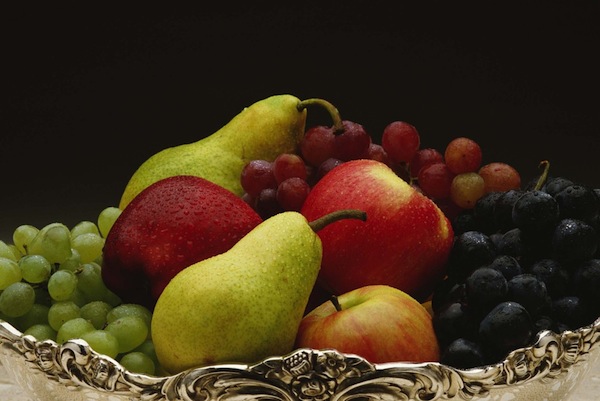Eating more fruit, particularly blueberries, apples and grapes, is linked to a reduced risk of developing Type-2 diabetes.
Blueberries cut the risk of developing Type-2 diabetes by 26% compared with 2% for three servings of any whole fruit – but fruit juice did not appear to have the same effect. In the new study published in the British Medical Journal (BMJ) researchers from the UK, US and Singapore used data from three large studies of nurses and health professionals in the US to examine the link between fruit consumption and the risk of contracting Type-2 diabetes. Among the study participants, 6.5 percent (12,198 out of 187,382 participants) developed Type-2 diabetes.
The researchers examined food frequency questionnaires to follow up the participants every four years, asking how often, on average, they ate a standard portion of each fruit. The fruits used in the study were grapes or raisins, peaches, plums or apricots, prunes, bananas, cantaloupe, apples or pears, oranges, grapefruit, strawberries and blueberries.
The researchers’ analysis of the data showed that three servings per week of blueberries, grapes and raisins, and apples and pears significantly reduced the risk of Type-2 diabetes. While all fruit was shown to reduce the risk, these fruits appeared to be particularly effective.
The researchers said this could be due to the fact these fruits contain high levels of anthocyanins, which have been shown to enhance glucose uptake in mice. The same fruits contain naturally-occurring polyphenols which are known to have beneficial effects.
In the study the researchers note: “Fruits have highly variable contents of fiber, antioxidants, other nutrients, and phytochemicals that jointly may influence the risk.” But the glycemic load of different types of fruit – the quality and quantity of carbohydrate they contain – did not fully explain the results, the study said.
The Juice Effect
When the researchers looked at the effects of fruit juice consumption, the researchers found a slightly increased risk of Type-2 diabetes. The study calculated that replacing weekly fruit juice consumption with whole fruits could bring health benefits.
For example, replacing fruit juice with blueberries could reduce the risk of contracting type-2 diabetes by 33%, with grapes and raisins by 19%, apples and pears by 13% – and with any combination of whole fruit by 7%.
Replacing fruit juice with oranges, peaches, plums and apricots had a similar effect.
Qi Sun, study author and assistant professor at Harvard School of Public Health, said, in general, fruit juices contained less of the beneficial compounds found in whole fruits. “The juicing process gets rid of the fruit, just leaving fluids which are absorbed more quickly, causing blood sugars and insulin levels to rise if they contain sugars.
“To try to minimise the risk of Type-2 diabetes as much as possible it is reasonable to reduce fruit juice consumption and increase consumption of whole fruits.” Kamlesh Khunti, professor of primary care diabetes and vascular medicine at the University of Leicester, stated that the large study showed that eating any fruit is good. “Eating all kinds of fruit works and there is still a reduction in risk.
Source: Fruit consumption and risk of type 2 diabetes: results from three prospective longitudinal cohort studies. BMJ (Published 29 August 2013). http://www.bmj.com/content/347/bmj.f5001












